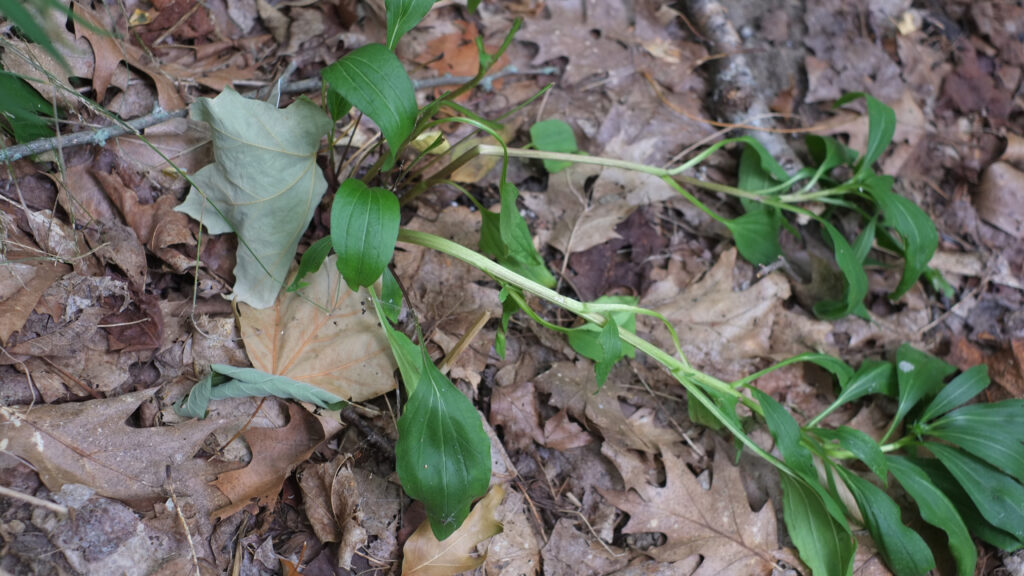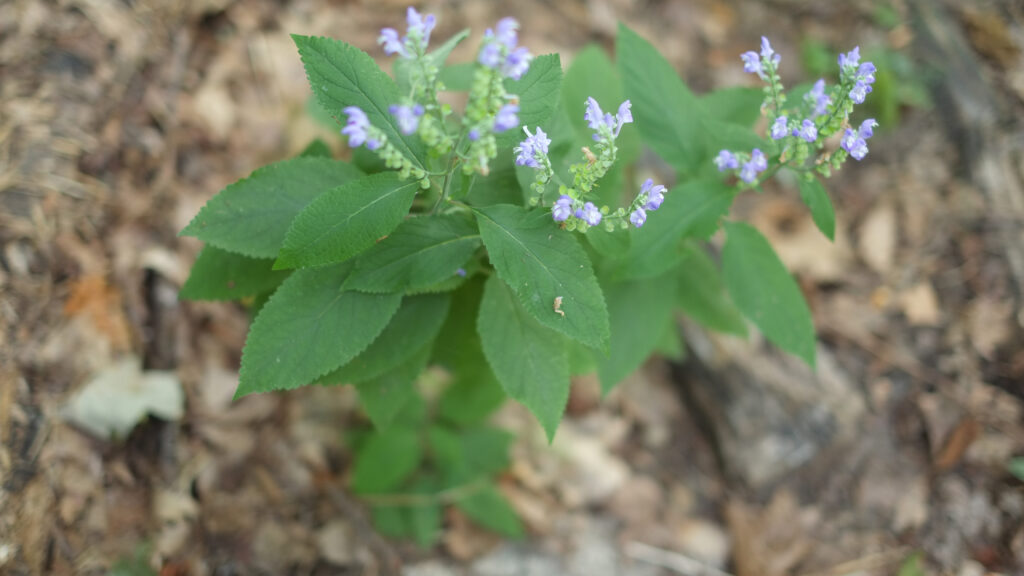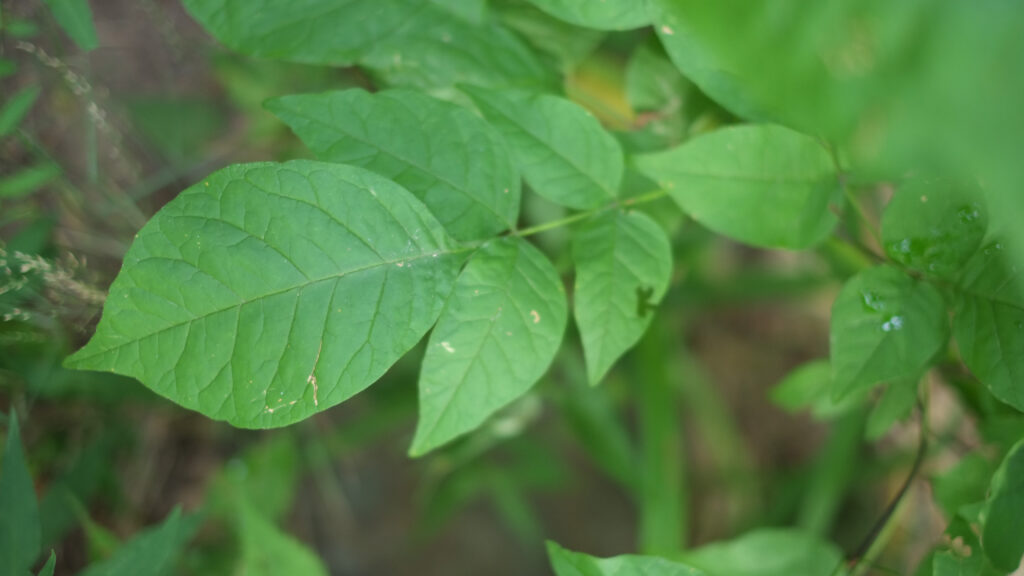This year’s planted annual vegetable garden has not resulted in many edibles yet – almost not any – and, the days are growing cooler. A first attempt at a garden, and quite a bit learned.

If I had watered more regularly, rather than relying on the rain plus occasionally watering cans of water, and enhanced the soil further, the results might have been different even though in the shade – people garden successfully in partial shade, though, this garden might be more than partially shaded.
A few POTATOS from the grocery store were planted on the lower straw bales. Planting potatoes not eaten and sprouted which come from the grocery store rather than certified seed potatos) has mixed reviews – mostly negative. These sprouts in the hay bale grew into a somewhat healthy plant (though, not in comparison to online views of potato plants). In not too many weeks, we will see if any potatos are there for harvesting and maybe even a couple for overwintering.

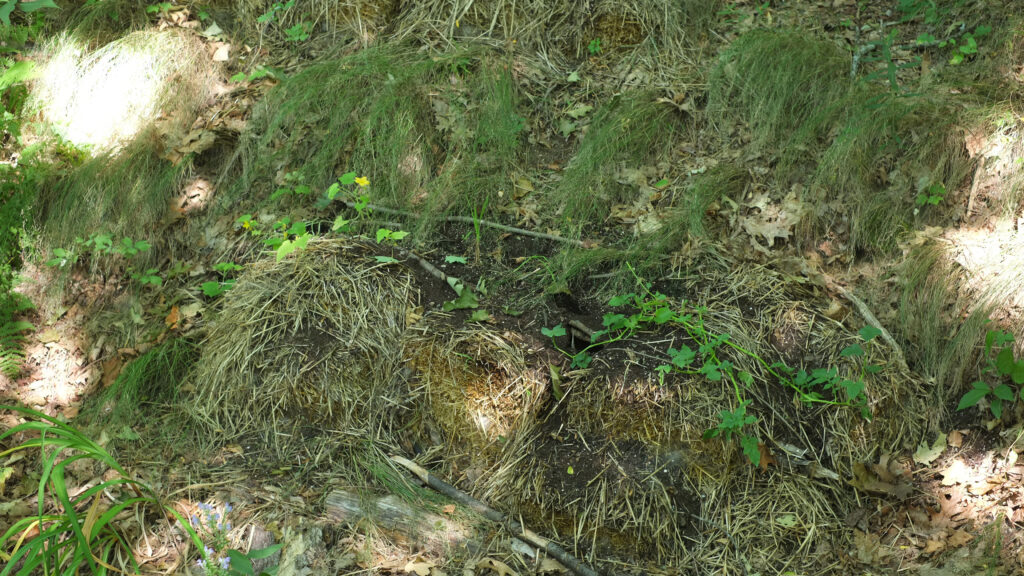
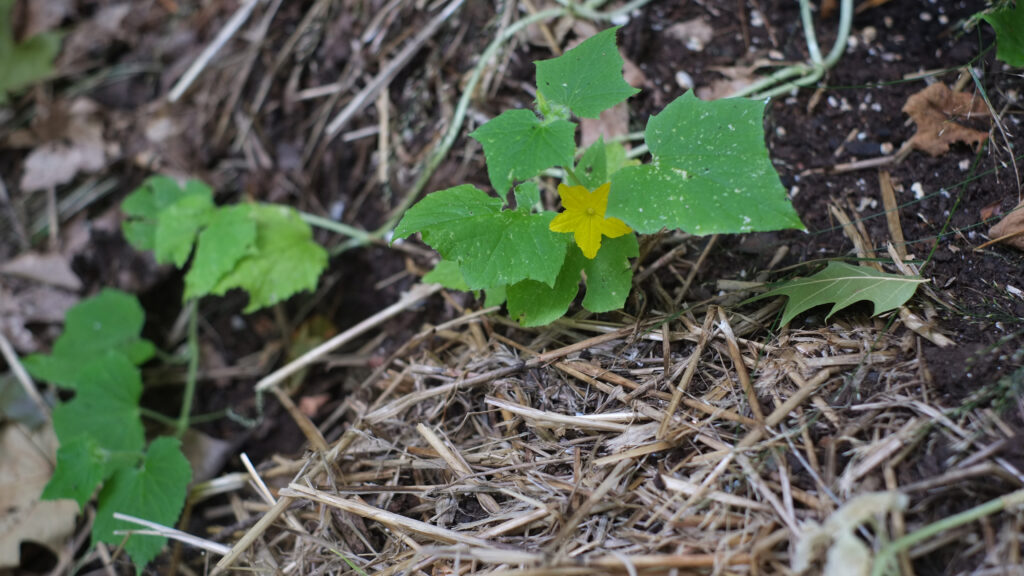
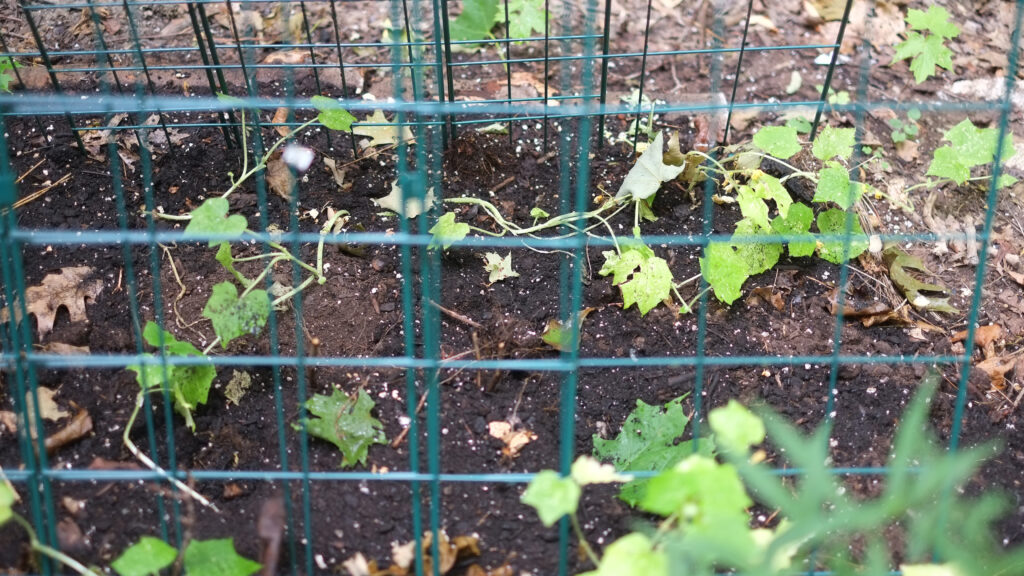
The PUMPKINs (no image) were planted in a planting bed among perennials, and maybe they, as well as CORN seedlings, are tasty as greens to some small or large creature, as they (and the corn) disappeared.
As it so happens though, these PUMPKIN seedlings which I grew fond of might not have been good for bees – their seeds had a coating on them, a neonicotinoid, which affects the entire plant – roots, stems, leaves, flowers, pollen, and fruit grown from such a seed, or grown in such ground planted with a coated seed, or sprayed.
(If neonicotinoids are a problem for bees, given all bees do and make, they also are a concern for humans. Neonicotinoids are water soluble pesticides, and are getting into the environment in more ways than by planting with them. So if harmful, the challenge is beyond reducing coated seeds. Might even just a few seeds coated with neonicotinoid be a concern? Plants themselves put out chemicals into the ground they grow in – are some of these plants also toxic to bees ? (But bees would know those certain plants?) Is some defense by using neonicotinoids ok? Does every coated seed contribute a little to the problem, so that with vast numbers of coated seeds, the problem for bees becomes vast? I do not know if in some moderation neonicotinoids might not be harmful, but below is a little more information.
“Field-realistic levels of neonicotinoids in pollen and nectar may not cause significant direct mortality to pollinators. Lawrence et al. (2016) found that risk to honey bees at field-realistic levels is low. However, exposure to sub-lethal levels causes decline in colonies of honey bees regarding activity, fecundity, and foraging behavior and pathogen loads (Desneux et al. 2007, Laycock et al. 2012, Whitehorn et al. 2012). Disease can increase as a result of exposure to neonicotinoids (DiPrisco et al. 2013). (26 UMO report 448, May 2018).
These pesticides have been used increasingly in U.S. agriculture since 2005, when the patents expired on seven neonicotinoids making possible the production of generic products. Almost all agricultural corn and ~ 1/3 of soybeans planted in the U.S. in 2013 were treated with neonicotinoid seed coatings. Aside from agricultural uses, neonicotinoids are also used to control pests such as fleas and lice in livestock and domestic pets. Use of noenicitinoids on food crops, environmental persistence, and possible binding to human nicotinic acetylcholine receptors raise concerns for potential adverse human health impacts with chronic low-level exposures.https://ntp.niehs.nih.gov/whatwestudy/assessments/noncancer/ongoing/neonicotinoid/index.html)
The mode of action of neonicotinoid pesticides is modeled after the natural insecticide, nicotine. They act on the central nervous system of insects. Their action causes excitation of the nerves and eventual paralysis, which leads to death…. most available toxicity data of the neonicotinoids is with imidacloprid. These data indicate that it is less toxic when absorbed by the skin or when inhaled compared to ingestion…. Signs of toxicity in rats include lethargy, respiratory disturbances, decreased movement, staggering gait, occasional trembling, and spasms. There are no accounts of human poisoning, but signs and symptoms of poisoning would be expected to be those similar for rats. (https://edis.ifas.ufl.edu/pi117)
Humans have a lot of body mass, so maybe eating a plant or its fruit and flowers affected by neonicotinoids does not greatly affect humans of any size, though, “These data indicate that it is less toxic when absorbed by the skin or when inhaled compared to ingestion” (ufl.edu). If humans might be affected then dogs also might be. If animals wear insecticide, and a human has a cut and a neonicotinide insecticide gets in the nick or wound, is this a problem, especially if a very young and so small person? Dogs with any cuts or unhealed places on the skin, also hypothetically might be susceptible to neonicotinoid neurotoxins from insecticide application through an open wound [see last paragraph below, pulled from a paper published online by the University of Florida – I have mixed but more negative than positive feelings about animals being tested with neonicotinoids, however the study’s information is information to consider].
On an upper straw bale are some BUSH BEANS, in quite heavy shade.
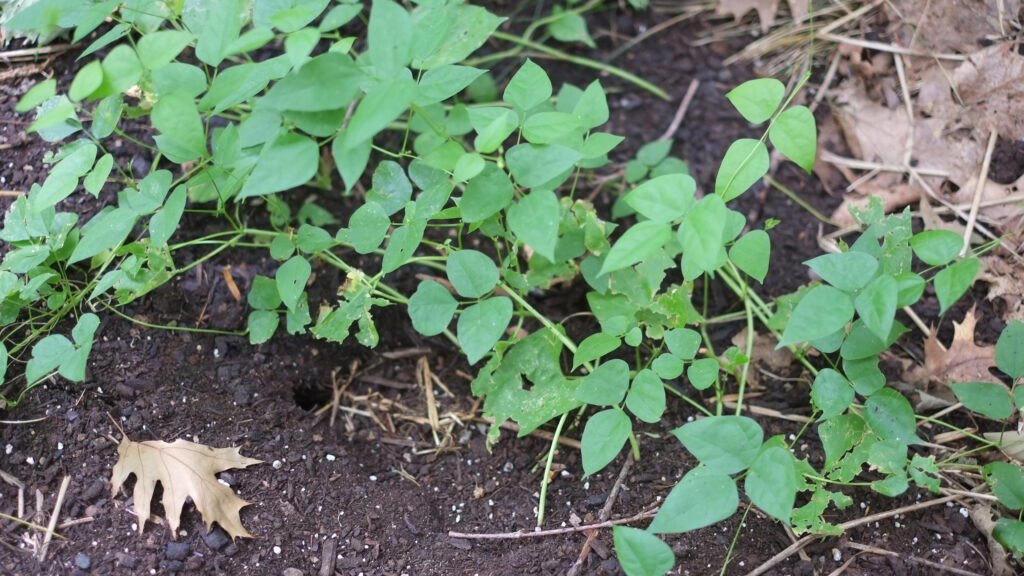
On the uppermost straw bale, at a flat heavily shaded area a STRAWBERRY plant and a RHUBARB plant were planted together. This was not a good location – not enough light and I am not sure if the rhubarb plant liked the straw? Neither plant lived – both went quickly, and this is especially sad because the rhubarb was very tiny – and sadly, after maybe 15 years of hanging on in a different location just so tiny, never growing large. I have seen an old rhubarb plant in a somewhat shady area, but am now wondering if I identified it correctly. My mother says when picking strawberries my grandfather would say to her “don’t step on the runners”, the strawberry plant I planted should still be growing this time of the year, producing runners, covering the slope with strawberries except for the lack of sun.
Below, the CARROT patch – the seeds never germinated or sprouted. I watered the carrot patch occasionally, but perhaps, not enough. Or carrot seeds are tasty.

A vegetable garden to me, most usually refers to a garden primarily composed of annual plants grown for their leaves, roots, flowers, seeds, and fruits (and looking this up, I missed stems).
A garden of edible plants might be all annuals,
a mix of perennials and annuals,
or all perennials,
and such a garden might contain predominately native plants, or a combination of regionally native and regionally non-native plants; fenced in, planted in raised beds, or integrated more fully into an environment amongst other plants at the same grade, without attempting to physically fence animals out.
ECHINACEA is a plant that is a companion to many others, including many garden plants, as is bee-balm, and so both were planted near these vegetables. The BEE-BALM was moved about a week ago – it was not happy below the hay bales, or in so much shade. The echinacea also, is not doing well in the photo below.
The one on the left was somewhat near a glorious JACK-IN-THE-PULPIT, which after several other plants in the garden flopped (lilies and bachelor buttons), it too, (the jack-in-the-pulpit) waned away for this summer. The lilies and bachelor buttons one day looked healthy, the next day they were not. The echinacea on the right (above) is between a SCUTELLARIA and a bachelor button. Maybe it is the wood that it is between that is difficult for it. Planting the two echinaceas side by side – I was considering this, wondering if this would help.
The echinacea were replanted across the yard, however, and though not near the vegetables, they will have the light they might prefer, and will still help attract pollinators to the area. They looked fine today.

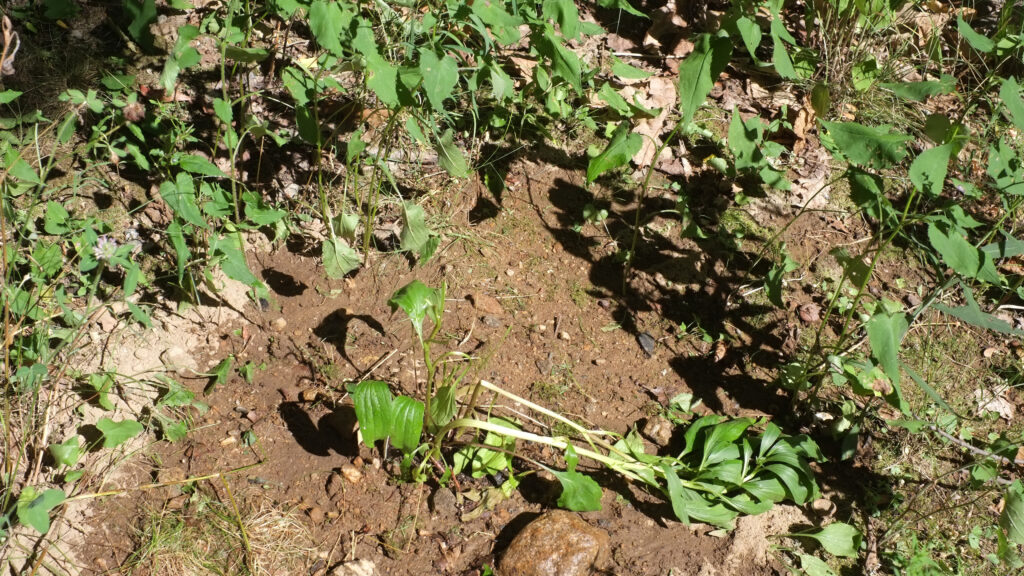
There is something about these echinacea plants though that I had forgotten (they were planted very early summer) – they are cultivars with a double flower. Their label says that they will attract birds. I am not sure about insects – or, possibly attract insects, but not be of help to insects, unless they help bring them near other plants beneficial to them.
“In a VT study of purple cone ower (Echinacea purpurea) and three of its cultivars, double- flowered and hybridized cultivars were significantly less attractive to pollinators than the species (White 2016)”(https://umaine.edu/mafes/wp-content/uploads/sites/98/2018/07/Bees-and-Their-Habitats-in-Four-New-England-States.pdf, page 19) though, Cone=fections company say that birds love their “Hot Papaya” plant, an echinacea purpurea cultivar (which has growing conditions of Sun to Part-Shade, and “allow soil to dry between waterings”, and space the “24 to 30 inches”).
One wonders, did the SCUTELLARIA know this echinacea was a cultivar?
Do cultivars of echinacea purpurea make as good companions as the native (not recently hybridized into new and varied colors) echinacea purpurea? Maybe to some plants and animals? The beautiful native echinacea in their pinkish-purple, purplish-pink, colors are outstanding plants, however, and well established as companions to many plants and animals. A few cultivars add color though, and still attract some pollinators to the area, and gardeners like them.
Below photo, some of these echinacea’s new close neighbors – various asters.

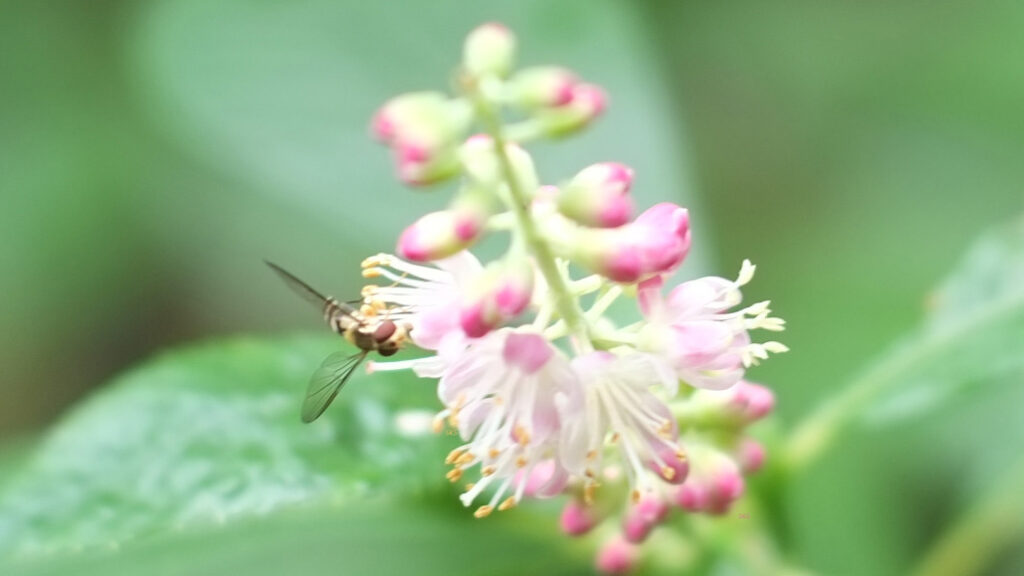
Above, a CLETHRA ALNIFOLIA, not right by the asters in the previous photo next to the newly colored echinacea, but within a fifty foot aerial fly (for us, a fifty foot walk). And below, some more plants from the surrounding environment.
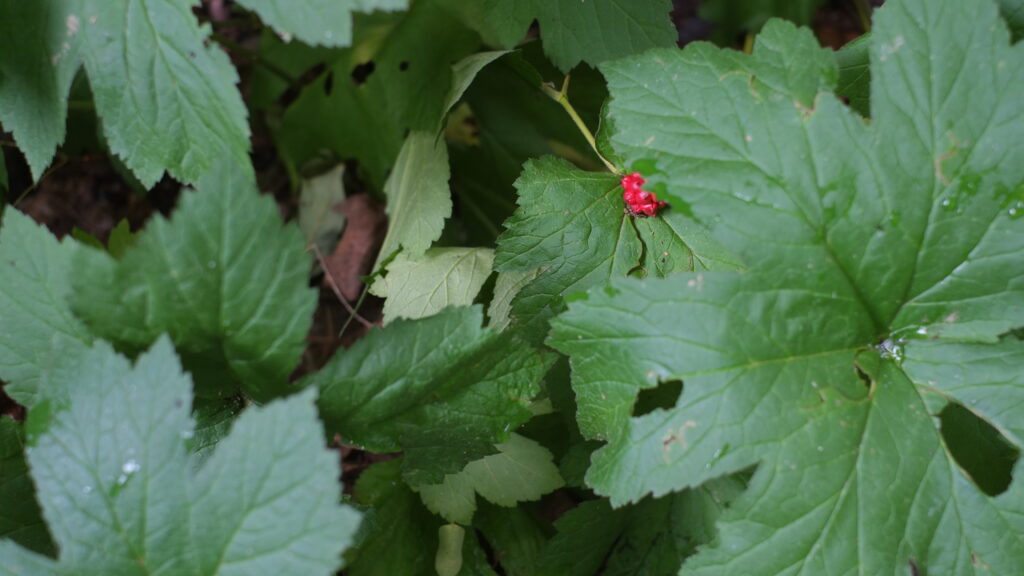
Above, these plants’ berries will ripen in late summer – they will stay on this GOLDENSEAL plant for a little bit more time. One plant was purchased locally many years ago, and has slowly spread, without me planting any seeds. Another goldenseal which does not produce berries yet that I’ve noticed – or, I think it is a goldenseal, is not in a place easily reached without hurting other plants, and I believe was planted (and/or defecated out) by a garden animal. This year I might try to plant some seeds from one berry. This goldenseal plant’s companions include more native plants of the same family. And a non-native called bedstraw apparently makes a good bed for goldenseal, as it is one of its nearest companions.
Below, these PLANTAINS were also astoundingly beautiful plants, standing tall, and leafy dark green, and they too, like the lilies and the bachelor buttons, overnight, went limp. They have begun to recover. Despite a refreshing rain overnight yesterday morning they did not look as healthy as in this photo a few days before. Then I wondered if it had had too much water – after all, it manages to grow where little else will grow. By yesterday evening though, with a gentle rain and cooler weather, they were looking good.
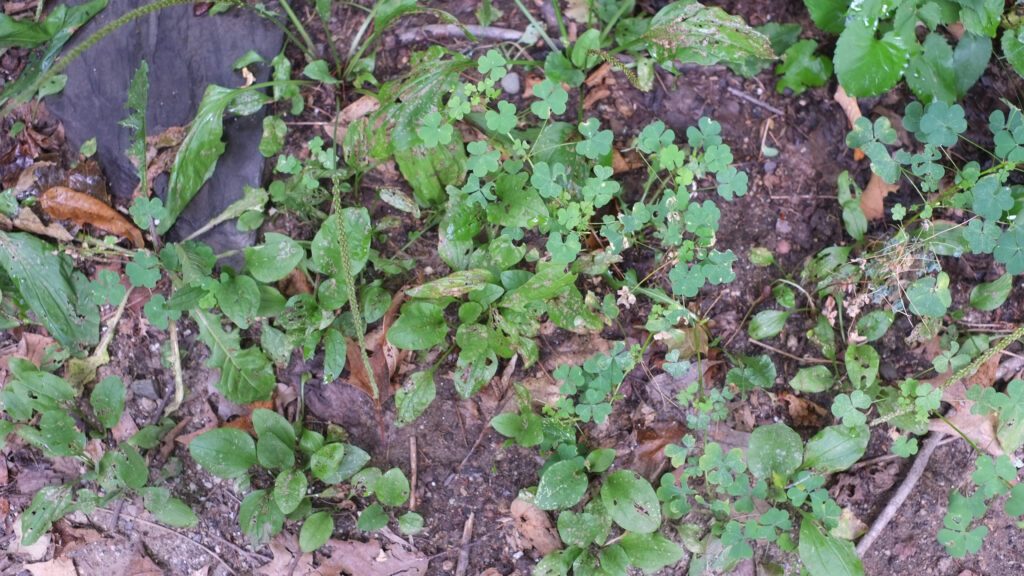
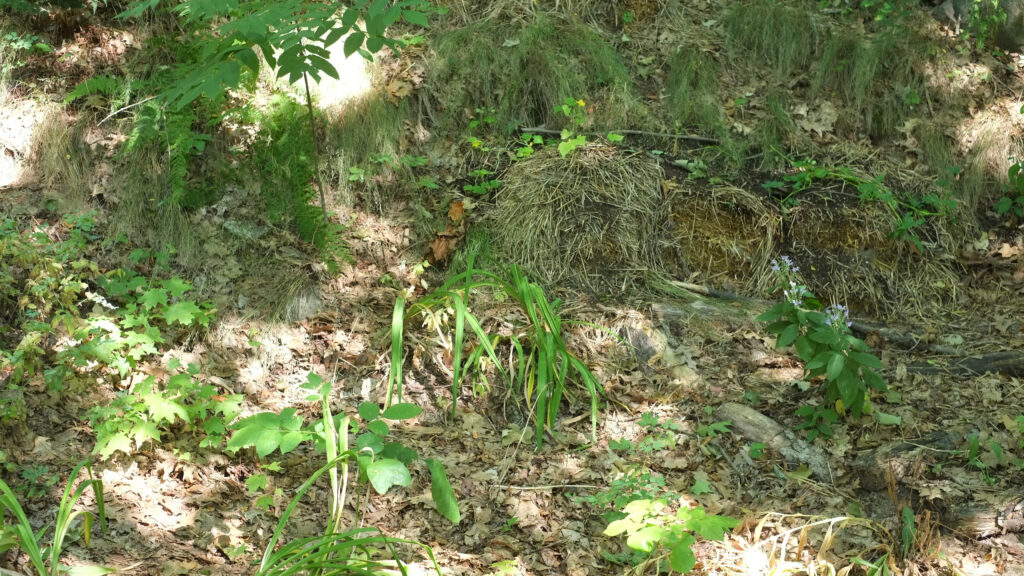
Tree seedlings and saplings growing in the yard include MAPLE seedlings, and I thought GREEN ASH, though, checking with a plant identification site, I am now wondering about SHAGBARK HICKORY, and one other that I still need to identify, which looks like a SUMAC.
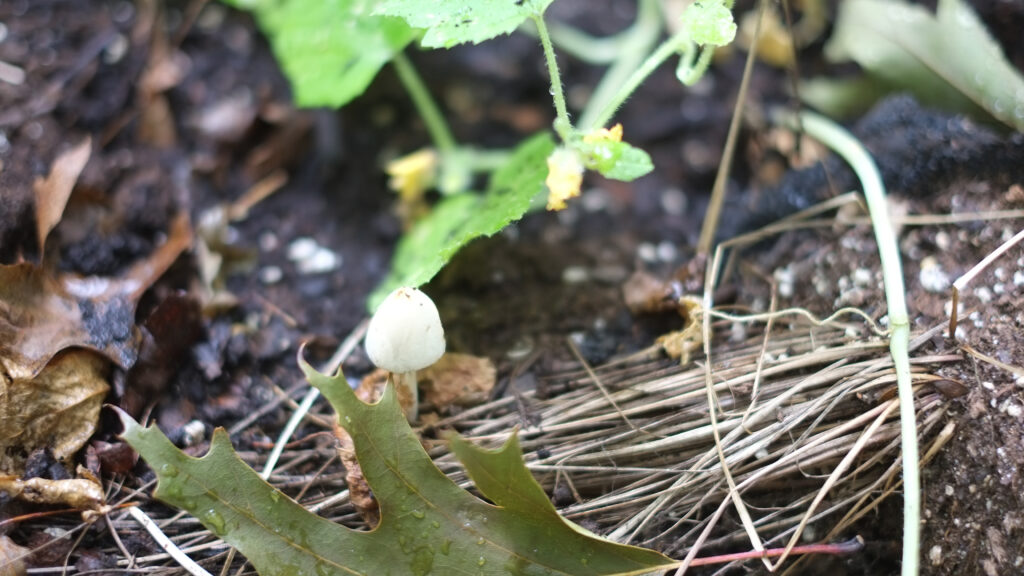
Different vegetables in this shaded slope vegetable patch, or perennials that have edible possibilities, might work out much better. Though, corn sprouts can grow in partial to full shade. Here is an article which has a sentence about growing sprouts in partial shade.
https://www.cooksinfo.com/corn-shoots
“After 3 to 4 days, the shoots should be about an inch (2.5 cm) tall. After this, grow without the cover. Some people advise direct sunlight; others advise a small light overhead. Still others prefer no light at all, even at this stage.” (https://www.cooksinfo.com/corn-shoots)

